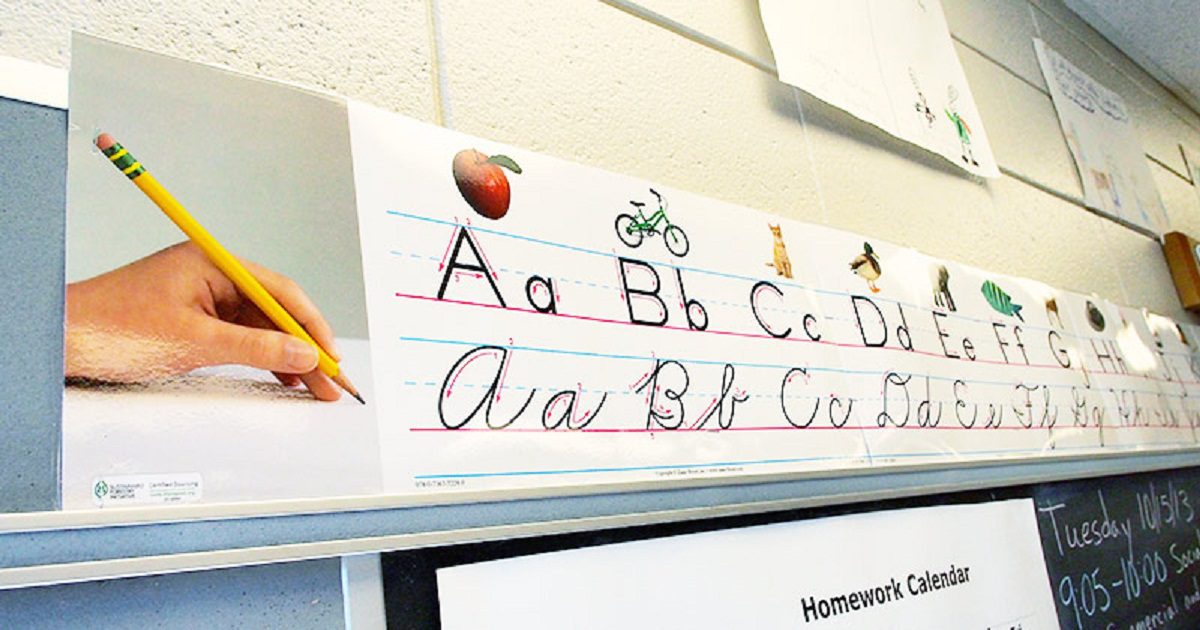Have you ever thought about all the things that your parents and grandparents have told you about, and you haven’t experienced yourself?
Don’t you think that over time, humans make mistakes by trying to simplify things and leave the new generations deprived of some valuable practices and items? It turns out, the era we live in is rich in easy-for-use and handy machines and gadgets, but we have lost some of the useful old-fashioned practices.
Numerous schools and districts around the world have scrapped handwriting from their curricula and replaced them with good old calligraphy and cursive skills with keyboarding proficiency. Also, excessive screen time has come in the place of beneficial experiments and outdoor activities at school.
Parents lament that technology made legible handwriting a lost art form for their kids, so lawmakers in several states, particularly in the South, decided to bring cursive writing to life and help the next generation.
In 2016, Alabama passed a law, and Louisiana followed. Others like Arkansas, Virginia, California, Florida and North Carolina, have similar laws. Now, the state of Texas decided to make a change and bring cursive writing skills back for good!
In 2017 it made the initial changes, and this 2019-2020 school year it will be officially implemented.
There is no doubt that technology boosts the development of children, but scientists have found that students learn and recall better when they take hand-written notes.
What’s more important, cursive stimulates the brain, especially in children, as it synchronizes communication between the left and right hemispheres.
Since the early 2000s, it has been absent from their curriculum, but now, it seems that we are going to rekindle the passion for this lost art.
The Texas Essential Knowledge and Skills reported that second graders would begin taking classes on cursive starting with the 2019-2020 new school session, and they will learn it until their 5th year.

It is planned that second-graders learn to form cursive letters with the “appropriate strokes when connecting letters,” third-graders would focus on writing complete words, thoughts, and answers to questions, and fourth-graders would learn the skill to complete their assignments outright in cursive.
Yet, despite the benefits, some parents dislike the idea of their children being taken two decades back. However, it’s not so much about modernity as it is about the benefits.
Diane Schallert, professor of educational psychology at the University of Texas explains that language is integral to the thinking process, and in the first grade, we learned cursive, and not to print, but in l language comprehension, there’s this reciprocity between producing and comprehending.
She also adds that it is not easy to add or remove subjects to the curriculum, and numerous factors are considered before deciding what the students need to learn and what they can do without.
Numerous schools decided to include cursive in their lesson plans, such as the Temple Independent School District, and it is a full subject in the standard curriculum.
Elizabeth Giniewicz, executive director of elementary curriculum for Temple ISD claims that children should learn to communicate through the written and spoken word, and cursive is vital for hand-eye coordination, fluidity in writing, memory, and motor skill development.
Suzanne Baruch Asherson, an occupational therapist at the Beverly Hills Unified School District in California and a national presenter for Handwriting Without Tears, an early childhood education company, maintains that regardless of the age we are in or the technology we have at disposal, success is measured by thought formation, and the speed and efficiency in which it is communicated, so students need various technologies, including cursive handwriting, to succeed.
If you know someone who might like this, please click “Share”!
